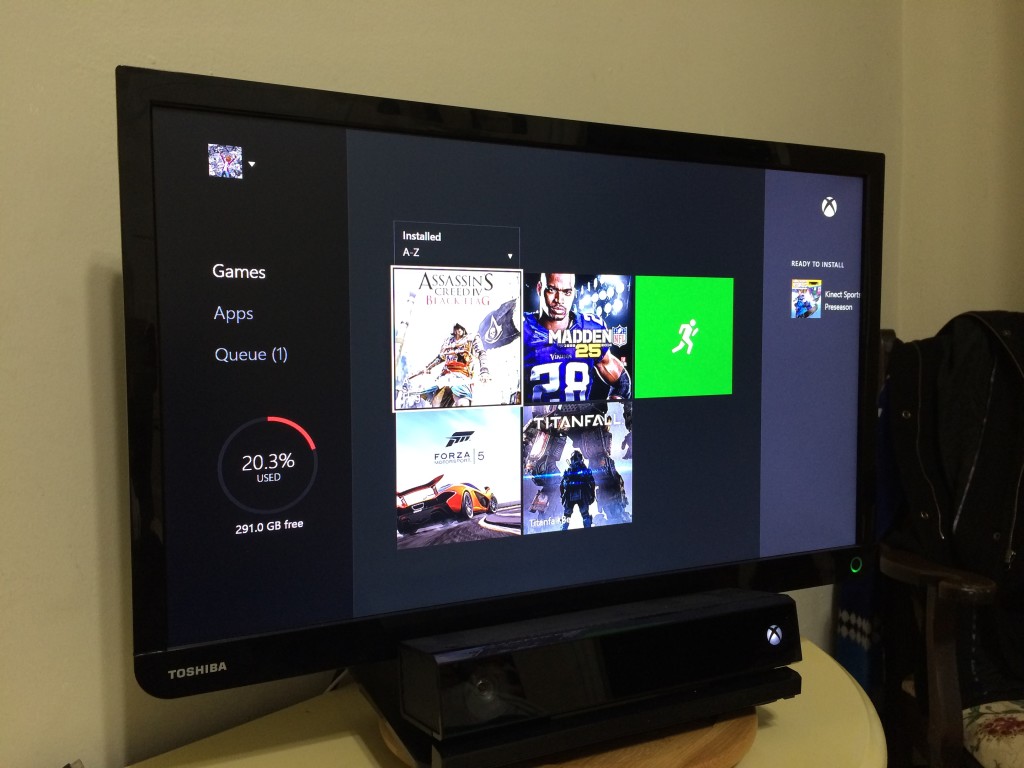“Microsoft is bringing Windows 10 to the Xbox One.” The headlines, in my opinion, almost write themselves after you think that over for a bit.
As Windows head Terry Myerson and Joe Belfiore stood on stage talking more about the changes Microsoft is making in Windows 10, I watched with bated breath.
Sure, this Windows 10 reveal was all about talking up enterprise features and setting expectations for users who have keyboards, but there was no way these guys were going to show a slide promising Windows 10 would run on phones of 10-inches and the Xbox One and not share a single detail on it. As it turns out, that’s exactly what they did and it has me thinking an awful lot about what the Xbox One running Windows 10 actually means.
“I’m thinking an awful lot about what the Xbox One running Windows 10 actually means.”
It could mean nothing
Microsoft has talked up using one version of Windows across its product portfolio for ages. Former Microsoft CEO Steve Ballmer and other company executives used to call this strategy Three Screens & A Cloud. Essentially, there’s one version or a common set of software code running on three different form factors like smartphones, tablets and what we think of as traditional PCs. A cloud service – more often than not, OneDrive – syncs these systems and makes it easier to switch between them.
When I hear the Xbox One will run Windows 10, this is the most likely scenario I believe. The Xbox One will run Windows 10 and probably gain some cool feature additions because of this. Maybe backgrounds could sync over easily, or plugging in a USB mouse could actually put a movable cursor on the screen instead of that funny little selector there is today in Internet Explorer. Maybe Internet Explorer on Xbox One could even include Flash plugin compatibility. (The version of Windows that runs on user’s notebooks, desktops and laptops has Flash baked in.) I’m shooting in the dark, but you get the idea. Tons of features would be possible, but the interface – the Xbox One Dashboard that we all have now would mostly remain the same.
It could mean everything
Or I could be wrong and we’re looking at a huge change. As I write this I’m still looking over notes from Tuesday’s press materials on Windows 10. I’m still at screenshots and trying ascertain what’s going on in the operating systems group at Microsoft.
For Xbox One owners, the biggest takeaways from the briefing have to be Continuum and the new Windows Store. As I understand it, Continuum is the process behind Windows 10 changing user interfaces based on what input devices are available at the moment. When you have a Windows 10 2-in-1, its Continuum that gives you the hybrid desktop and Start Screen interface. We could see a future where Continuum is used on the Xbox One to hide different elements based on whether a user has a Kinect 2 sensor or prefers using an Xbox Media remote. That would be a huge change for the Xbox One as Microsoft has essentially stuck to one design and then bolted Kinect interactions into floating app bars and hidden triggers that you don’t know are there unless you say “Xbox” or hold your hand up. That could be epic.
The Windows Store is getting an evolution in Windows 10, and one thing Microsoft kept repeating is how it plans to merge the Windows Store across different devices. I’ve seen a lot of people excited about this on the Windows and Windows Phone fronts. They’re all hoping that having access to more users will make the Windows Store a developer destination. I’m both a Windows and Windows Phone user and I’m not holding my breath on that one. I think the big implications here are for Xbox One. Today, the Xbox Store is a white whale. The average person can’t get their app into the Xbox Store and if they wanted to get a game in there they’d have to sign up and be accepted to the ID@Xbox. That’s the independent developers program Microsoft announced shortly before launching the Xbox One. It’s possible that Microsoft has plans to open app and game development to everyone and put the Xbox One on equal footing with its other platforms. It’s also entirely possible that one Windows Store on the Xbox One translates to developers having a common set of APIs that they can build their Xbox One apps with. In the latter scenario nothing really changes for the user. There’s no influx of new apps from hobbyists trying to build the next big thing. Its just easier for Xbox partners to create their own great apps.
These are just musings. I’m waiting to see how all of this works itself out over the next year. Is it possible that Microsoft will use Windows 10 to turn the Xbox One into the media and entertainment destination with a proper store? Or is Windows 10 on Xbox One more marketing speak, like that time someone at Microsoft thought it was a good idea to talk about the Xbox One running Windows 8, Xbox OS and some software that switches between the two? (Try explaining that to someone yelling “games!”) We’ll, see.

